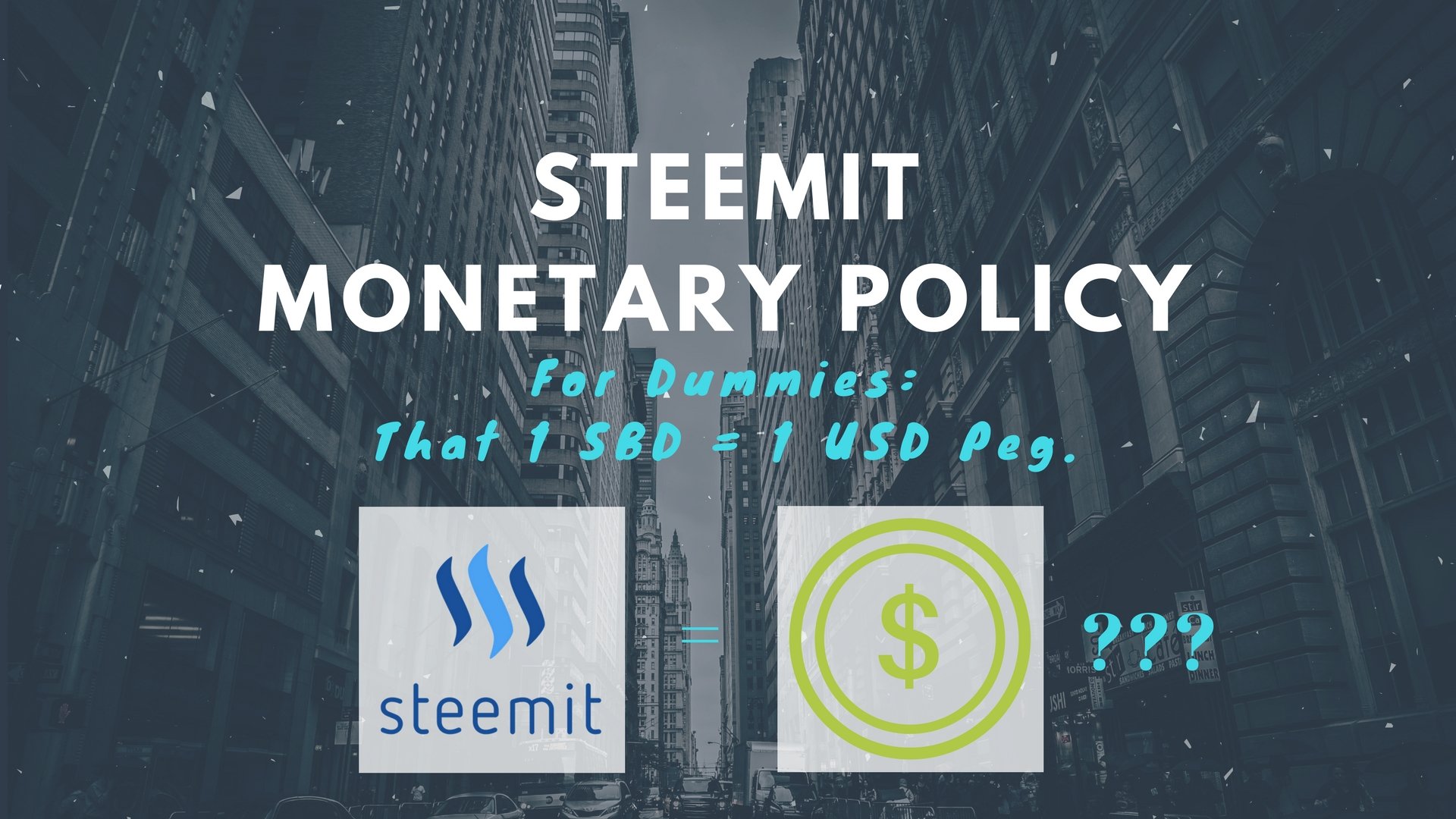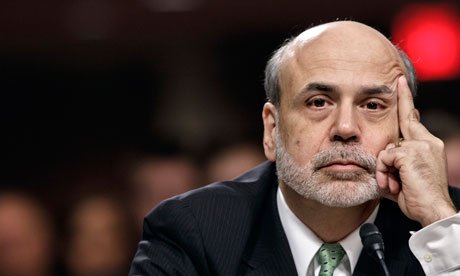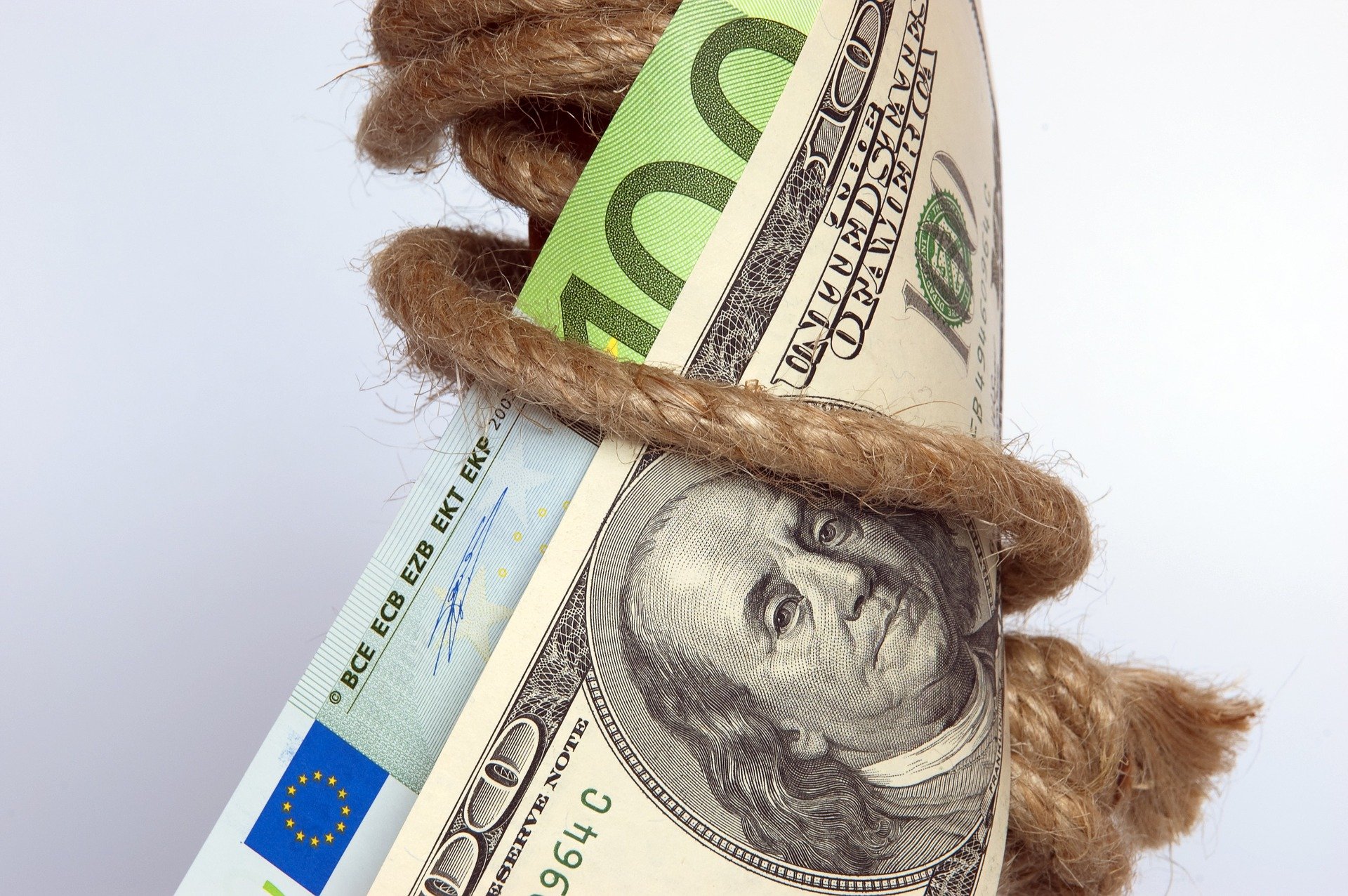tl;dr It's hard to maintain a peg if you don't want it enough. It's possible to achieve the SBD Peg with the help of Economics. But do we really want it in the first place?
I just wrote a post on the difficulties of maintaining a peg, with reference to Tether, and then I chanced upon this post by @briggsy and the general confusion about the SBD peg. So, ready or not, here comes a post on monetary policy for Steemit.

Part 1: How the SBD Peg Was Supposed to Work - Interest Rates
It's hard to maintain the SBD peg. In this case, even though the platform has an announced intention of keeping SBD/USD near 1, it relies on only the interest rate mechanism to do so, i.e. you get interest payments whenever SBD value is less than (or near) 1 USD, but nothing if it goes over.
The logic here is this: Suppose you have 1,000 SBD. If the price is 1 USD, that's $1,000. By keeping the money on the platform, you are essentially loaning money in return for a certain % interest payment. If the price is > 1 USD, let's say $5, then you have $5,000 loaned to the platform. The expectation is that users will realise that they can cash out this $5,000, and invest the money in another asset that pays out interest.
Obviously, it's hard for a lot of users to make that connection, especially when they don't normally accumulate enough SBD (before powering up) to want to spend the effort to make an investment decision (think about the time and effort cost required to cash out 5 SBD = $25 and invest it elsewhere).
This mechanism is failing, which is why the peg doesn't work.
Part 2: Why the SBD Peg is Broken
2 Reasons:
- High costs of cashing out means people are more likely to hold SBD even when it's more profitable to cash out and invest the money elsewhere.
- Lack of intervention to maintain the peg + higher price = profit from holding on to SBD
--> As I discussed in my post on the difficulties of maintaining a peg, beliefs about the peg are vital. A history of a lack of intervention to maintain the peg, means that nobody believes that the price of SBD will fall to $1 and I will make a loss by holding on to SBD when it is >$1.
--> Furthermore, we can then entertain the possibility that I can hold on to SBD and earn a profit from it if the price rises in the future.
--> So people hold on to more SBD. Collectively, SBD price goes up.
So what options are available to us, assuming that we actually want SBD = 1 USD?
1. Negative Interest Rates + Actually Enforce the Peg
The Steem white paper discusses, but seems to dismiss, the possibility of using negative interest rates when SBD is overvalued to achieve the $1 parity. That will mean you pay the platform money to hold SBD if you don't cash out, or power up. It's hard to imagine that this will be popular among users.
2. Reduce Cost of Cashing Out + Make Clear the Opportunity Cost of Holding SBD
Another possibility is making it easier for users to cash out to USD. At the moment, cashing out entails converting to some other cryptocurrency and then selling it on an exchange that allows you to withdraw USD. This process is costly (lots of fees paid out for transactions) and takes a lot of time to complete. People will be more likely to cash out, i.e. sell SBD, so the price falls if that's the case.
It is unlikely that this will work by itself. At the very least, we need a combination of options 1 and 2.
3. Actual Monetary Intervention (Open Market Operations)

Pictured: Ben Bernanke, ex-chairman of the US Federal Reserve,
aka guy who (maybe) saved America
As set out above, the supply of SBD is not responding sufficiently to the low interest rates. We can have a body/collective with a mandate that is set in stone to preserve the peg. It will have to hold a large reserve of SBD and USD. It intervenes directly in the market to sell SBD when the price of SBD is too high, and it buys SBD when the price of SBD is too low.
In practice, there need not be too much intervention as long as we get everyone to believe that the body will intervene to preserve the peg and that it has sufficient reserves to do so (it's larger than anyone else out there).
Cons: The problem with this idea is, who is going to make up this body? Do we trust them enough to act on our behalf when millions of USD might be involved? We are effectively creating a central bank with the power to set the value of SBD. Will the centralisation be against the spirit of cryptocurrencies and Steemit? The only way around this might be to hard-code the mechanism into the Steemit platform, thereby taking it out of the control of any player.
Rewards Bonuses/Penalties to Maintain the Peg

The best, and perhaps only, way of taking away doubt and ensuring belief is to take it out of the hands of all players. An example would be to calculate at the time of rewards payout a bonus/penalty % that counteracts against deviations from the peg.
To be clear, if 1 SBD = $1.05 at the time of reward payout, all users will get a 10% bonus in the quantity of SBD received. That very quickly increases the supply, which will push down the price of SBD. In contrast, if 1 SBD = $0.95, all users will have a 10% penalty in the quantity of SBD received. The greater the deviation, the larger the bonus/penalty % (for example, 50% if 1 SBD = $1.10 or $0.90). For this to work, nobody must have the option of revoking the system, even if it is deeply unpopular among users, so that there can be no doubt in the continued achievement of the peg.
Why? If we achieve that, the moment there is a small deviation from the SBD/USD=1 peg, it will become profitable for a trader to step in and buy/sell SBD in expectation that we will return to the peg. For example, if SBD = $1.01, everyone knows that supply will increase soon, and the price of SBD will fall back to $1, so enough traders will step in to sell SBD and convert to USD now that it increases the supply of SBD. Because of this arbitrage motive, we won't even have to wait for the supply to change by the bonus/penalty ratio. Trading will ensure that we have the peg.
Part 3: Finally, do we really want the SBD/USD=1 peg?
Sure, it's in the white paper, with the purported aim of creating stability in the value of SBD for for people to get used to the concept of cryptocurrencies and accept the platform. But we have had an extended period of time where the peg was not working, price is fluctuating from day to day, but that has not stopped users from joining the platform. So are the benefits really worth it?
The peg is not cost-free.
Not to mention that the peg is not cost-free. We are in effect importing US monetary policy. Why? Suppose the peg actually holds, so 1 SBD = 1 USD always. If the Federal Reserve (US central bank) changes monetary policy that causes the USD to depreciate in value compared to other currencies in the world, 1 SBD falls exactly in line with that. Example, 1 USD=1 SBD got you 0.71 GBP (British Pounds) or, for example, 5 apples. The USD depreciates and now 1 USD=1 SBD is worth 0.5 GBP, or 3.5 apples.

Yep, that's right. Your decentralised cryptocurrency is not so decentralised anymore, is it?
What the US government does will affect the value of your virtual currency. We need to have a discussion about the pros & cons of a peg.
Think I missed out a possible option? Leave a comment and let's talk about it!

Other Similar Posts:
- (Cryptos & Economics) On Tether: #2 Lessons from Actual Currency Crises. What Tether Should Already Know.
- (Cryptos & Economics) On Tether: #1 A Tale of Two Firms - Enron, Tether, and FUD
- (Cryptos & Economics) Economist Paul Krugman's Views on Bitcoin: A Summary + Why Less Gloom and Doom for Cryptos Might be Justified
Don't forget to follow, resteem, and leave a comment!
@wilfredn
